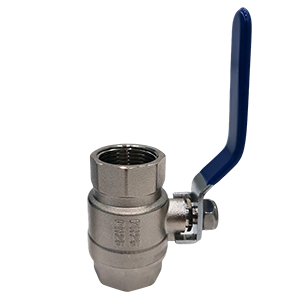Ball valves are essential components in many industrial, marine, and residential piping systems. Known for their durability and reliable shut-off capabilities, ball valves are commonly used to control the flow of liquids and gases. However, like any mechanical part, ball valves can wear out or fail over time, causing operational issues and safety concerns.Knowing how to tell if a ball valve is bad is crucial to maintaining system performance and preventing costly downtime.
Common Signs of a Bad Ball Valve
1. Leakage Around the Valve Stem or Body
One of the most noticeable signs of a failing ball valve is leakage. This may happen due to worn-out seals, damaged seats, or corrosion. Leakage can appear:
-
①Around the valve stem (where the handle connects to the valve)
-
②At the joint between the valve body and piping
-
③Through the valve itself when it’s supposed to be closed
Leakage compromises system safety and efficiency and requires immediate attention.
2. Valve Handle Feels Stiff or Hard to Turn
If the ball valve handle becomes difficult to turn, it could indicate:
-
①Internal corrosion or buildup obstructing valve movement
-
②Worn or damaged seats causing friction
-
③Mechanical damage or misalignment
A stiff handle might also signal the valve is stuck in either the open or closed position, risking operational failure.
3. Inability to Fully Open or Close the Valve
A ball valve’s purpose is to provide tight shut-off or full flow. If you find the valve:
-
①Doesn’t fully open, causing restricted flow
-
②Doesn’t fully close, leading to leakage or flow when it should be stopped
It suggests internal wear or damage to the ball or seat, which requires repair or replacement.
4. Unusual Noises During Operation
Hissing, whistling, or vibrations while operating the valve can indicate internal leaks or damage to valve components. These sounds often point to partial seating or pressure imbalances caused by valve defects.
5. Corrosion or Visible Damage
Especially in marine, industrial, or outdoor applications, valves are exposed to harsh environments. Corrosion, rust, cracks, or physical damage to the valve body or handle often reduce valve integrity and performance.
6. Valve Not Holding Pressure
If your system experiences pressure drops or fluctuations that seem related to a specific valve, it’s possible the ball valve is not sealing properly. A bad ball valve can cause unwanted flow, system inefficiency, or safety hazards.
How to Troubleshoot a Suspected Bad Ball Valve
-
Visual Inspection: Check for leaks, corrosion, and physical damage.
-
Operate the Valve: Turn the handle fully to observe any stiffness, obstruction, or unusual resistance.
-
Pressure Test: Monitor pressure before and after the valve to detect leakage.
-
Flow Test: Confirm the valve allows full flow when open and completely stops flow when closed.
-
Seal Replacement: Sometimes, worn seals can be replaced without changing the entire valve.
-
Professional Assessment: For critical systems, always consult a valve specialist or engineer for diagnosis.
Why Regular Maintenance Matters for Ball Valves
Preventive maintenance extends the life of your ball valves and avoids sudden failures. This includes:Routine inspections for leaks and corrosion.Lubricating valve stems.Flushing lines to remove debris.Replacing worn seals promptly
Post time: Aug-08-2025

